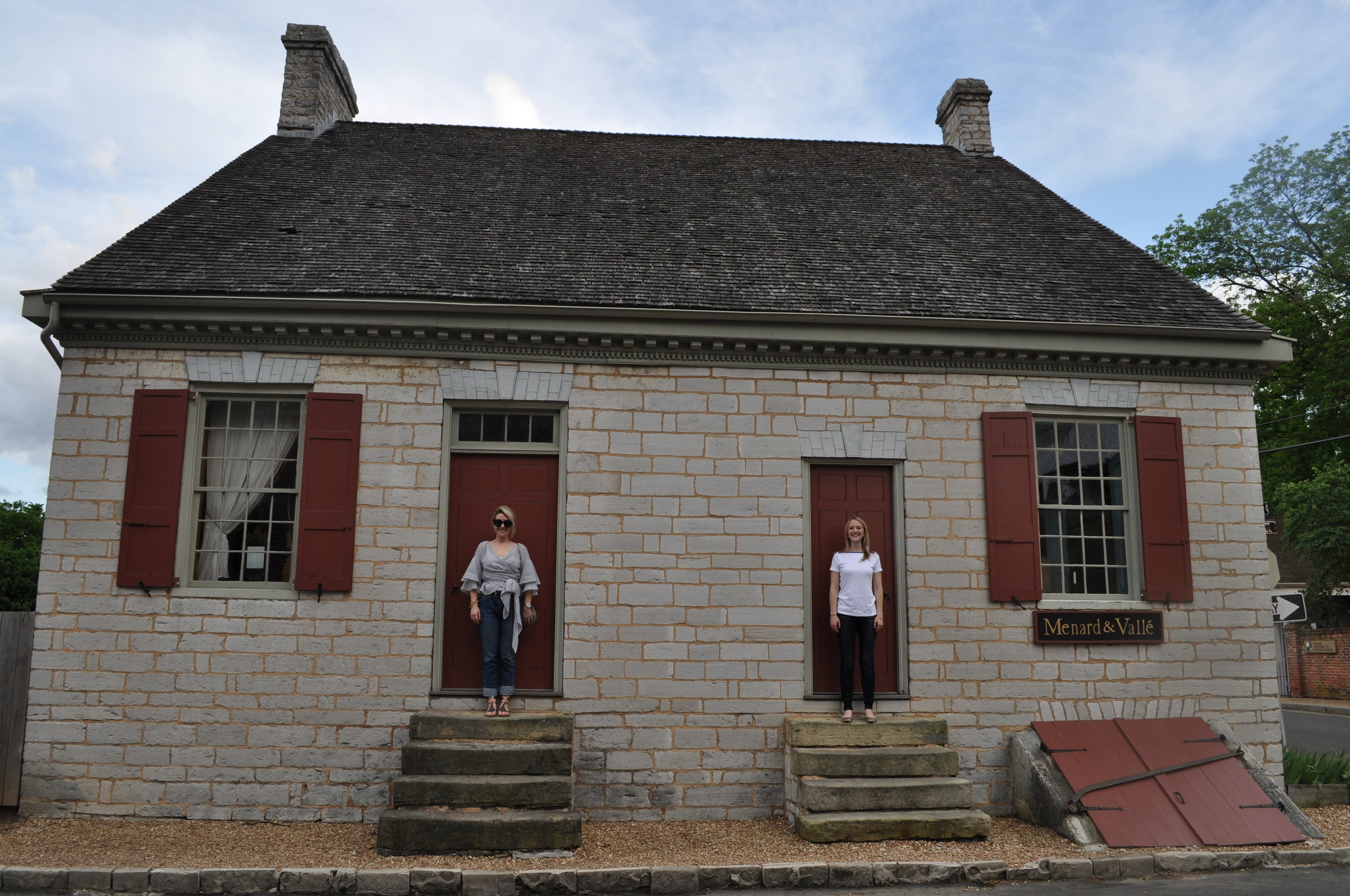
Visiting Ste. Geneviève, Missouri
Last summer, we took a weekend road trip to the village of Sainte Geneviève, Missouri, founded in 1735 by French Canadian colonists making it Missouri’s oldest town. It was the first major European settlement west of the Mississippi River. Due to the remarkable preservation of its original log structures, it is filled with historic attractions and charm, offering visitors a glimpse at colonial life. For obvious reasons, I have long wanted to visit a town with my more unusual namesake, and what made it even better is that it’s truly a destination for Midwest travelers seeking beauty, history and (bonus!) wine tasting!
We stayed at a bed and breakfast (there are many of these in Ste. Geneviève to be found) and the first day enjoyed walking around the historic district, taking advantage of some of the tours the different buildings offered, and perusing some of the lovely shops and antique dealers. The second day, we rented a trolley, which we had to ourselves, and hopped from one of the many vineyards to another. Early European settlers of Missouri found that conditions were ideal for grape growing. At one point, Missouri was the largest wine-producing state in the country! Wine is still a big industry here and some varietals which are unique to this area include Traminette, Vignoles, Norton and Chardonel, all of which we sampled.
The highlight for me was visiting authentic, working gardens at the Felix Vallé House. The gardens were planted with historic vegetables and medicinal herbs determined to have been used in the colonial era. It was run by the local garden club where they dressed in period clothing, and were so knowledgeable and welcoming. I was even able to purchase some of the saved seeds from their unique plantings that would do well in my Illinois garden, including native False Blue Indigo seeds, the flowers of which were used by early settlers to make dyes.
*July 2018 Update*
The National Parks Service will be adding Ste. Genevieve National Historic Park to its care and keeping, “”to preserve, protect, and interpret for the benefit of present and future generations the themes of French settlement, vernacular architecture, and community form and farming on the frontier associated with Ste. Geneviève.”
Welcome!
The Ste. Geneviève Herald, still in print
Charming buildings abound
The Southern Hotel, the oldest operating hotel in the United States west of the Mississippi
The Louis Bolduc House
Outbuilding of Louis Bolduc House
Glorious Gardens
Historically planted gardens
Felix Valle House, authentically restocked mercantile store
Bee skep
Felix Vallé House Gardens
Necessary photo-op
Crisp and refreshing Vignoles
Trolley pals













